Kalanchoe or kalankoe is a truly beautiful succulent.
Key Kalanchoe facts
Name – ‘Blossfeld’ Kalanchoe
Family – Crassulaceae
Type – succulent, perennial
Height – 12 inches (30 cm)
Exposure – well-lit
Soil: soil mix – Foliage: evergreen – Flowering: early → mid-spring
Care is rather easy but a bit of advice on watering or pruning will help you get even better flowers.
Planting kalanchoe
Most often, this particular variety – Kalanchoe blossfeldiana – is sold and grown in pots as a beautiful houseplant.
Planting and repotting
This plant is suited to mild climates, and should preferably be cultivated indoors if you expect the weather to freeze.
You may repot your kalanchoe just after purchasing it if you’ve purchased it while it wasn’t flowering.
- After that, repotting on an annual basis in fall after the blooming should help promote sprouting of new leaves at the end of winter.
Planting it outside? Only possible where it doesn’t freeze: frost will kill it.
Propagating kalanchoe
Propagation is through cuttings in fall.
Gather the tips of the stems on about 3 to 4 inches (8 to 10 cm).
- Let wounds heal in open air for 24 h.
- After that, dip in powdered rooting hormones.
- Plant in seedling and cutting soil mix.
- Keep your cuttings in a well-lit place, heated to more or less 68 to 70° F (20 to 21° C).
Million-babies kalanchoe
Some kalanchoe varieties grow tiny buds all around the perimeter of their leaves.
These are small “pups” that fall off and take root, giving rise to a new plant each time.
- Each of these is a clone of the mother plant and will have the same characteristics.
Caring for kalanchoe
Although caring for kalanchoe is actually straightforward, a few tips will help you grow a very nice, long-living plant:
Remove wilted flowers regularly (deadheading). This step isn’t mandatory but it helps stimulate the plant to produce new flowers. Each flower is at the tip of a stem. Cut the stem back to about 1/4th inch (0.5 cm) above the nearest leaf node.
- Repotting after the blooming in a pot that is slightly larger than the previous will extend the lifespan of your kalanchoe.
- Adding flower plant fertilizer will help extend the blooming and increase its beauty.
Watering indoor kalankoe
- During the blooming, 1 to 2 waterings a week, when the soil has dried well.
- Outside of the blooming season, 1 to 2 waterings a fortnight.
- In winter, 1 to 2 waterings a month should suffice, but if the air inside your home is very dry and warm, do it a bit more often.
In any case, it is important for the soil to have dried well before watering, in which case it is also better to water once rarely with a significant amount instead of many moderate sessions.
BE CAREFUL! Leaves from succulents are loaded with water. If they start wrinkling up, it shows they need more water. But if they’re plump and start drooping, you might be over-watering!
Learn more about kalanchoe
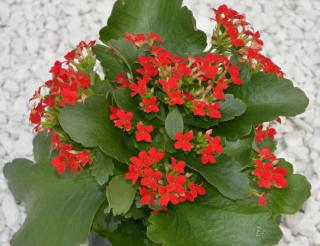
With its reduced need for care, it poses practically no difficulty to the caretaker.
Although excess water is what most often kills it, it also likes having a lot of light, but not scorching direct sun.
You can set it up either in a pot or in a garden box, but take care not to let children or animals play or peck with it, because the leaves are poisonous when ingested.
Smart tip about kalanchoe
Amending the soil with organic fertilizer will favor blooming, so you must take care not to provoke this during the dormant state, from October to February.

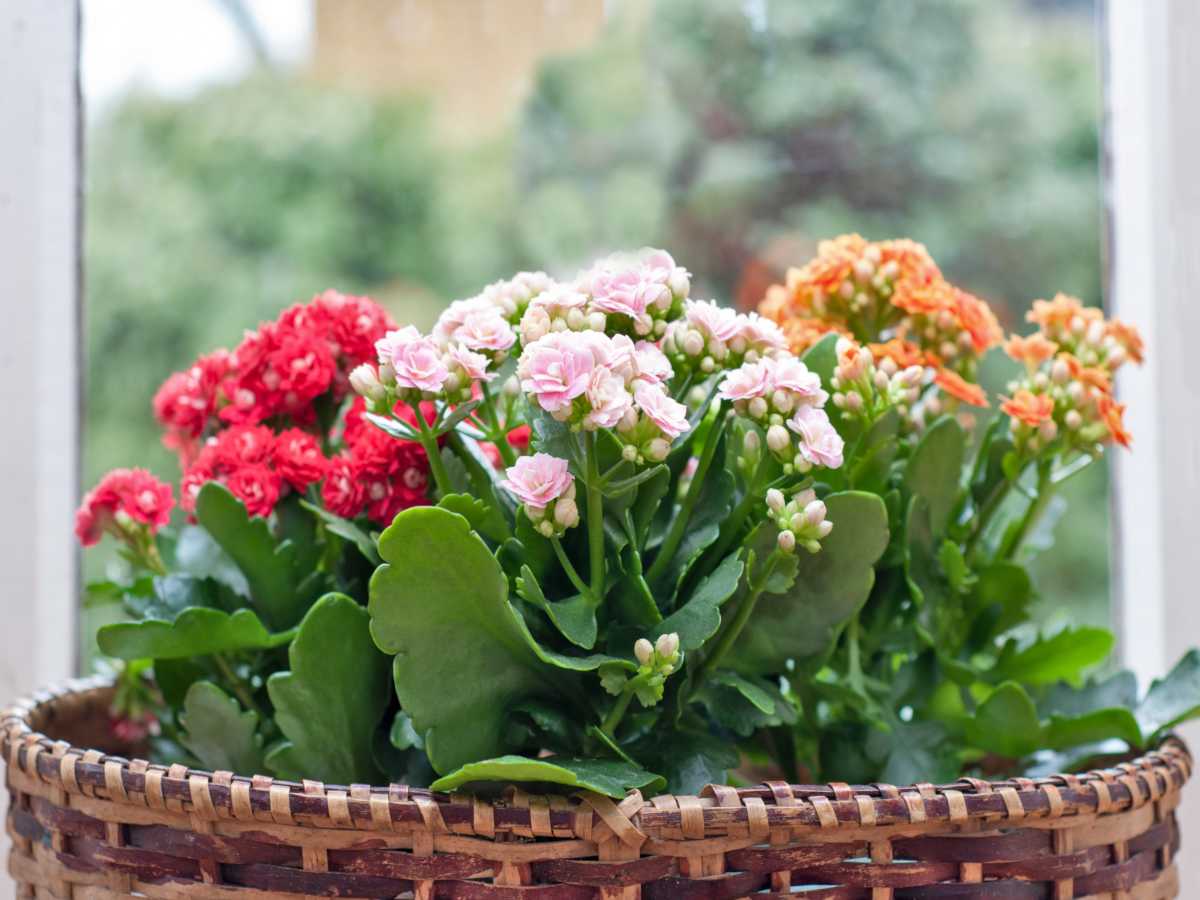
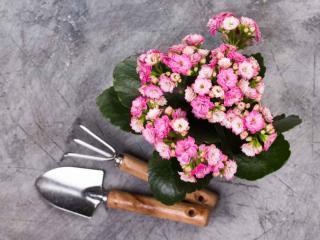
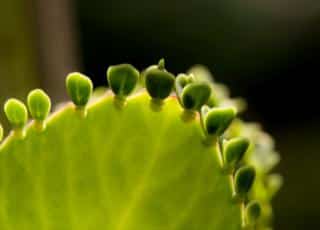
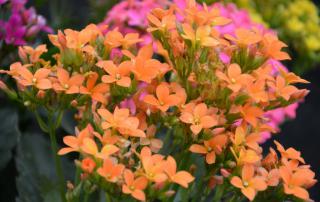
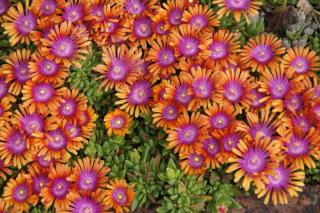
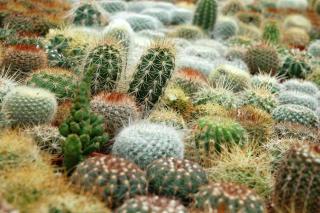
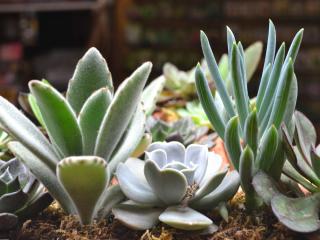
The flowers on my Kalonchoe plant started wilting a lot and the soil seems too moist even though I have not watered it since I bought it about a month ago? Should I repot it?
My kalanchoe bloomed beautifully this Spring. The flowers are fading and I have been deadheading. It is tall and spindly. There are about 2 to 3 inches of stem with no leaves or bloom. Can I cut it back or would it be better to cut off the top part and reroot?
You can do both! The stems that carried flowers will dry up and fall off, so you can cut them back to the first node. It’s kind of like the stems of a geranium flower: the only purpose is to carry the bloom.
If you find your kalanchoe a bit too bare, you can cut some of the longer stems back and use the trimmings to make cuttings.
– make sure to include at least three or four nodes in the cutting.
– cut about 1/4th inch (0.5 cm) above a node where there used to be leaves.
– plant your cuttings in moist potting soil and cover with a clear plastic pouch to lock moisture in, or try one of these ways to increase air moisture for plants.
The mother plant will sprout new shoots lower down, and each cutting can become a new plant to grow or give.
My kalanchoe is blooming right now, but looking quite crowded in the pot it is in.
Will I kill it if I repot it now? It’s been such a great plant. I leave it outside in the summer and the pink flowers turn red in the summer.
Hello Dee, repotting it now won’t kill it, but it’s best to wait for autumn or fall. If you’re in the Southern hemisphere, you can go ahead now, but if you’re in England, the United States or Canada, set a date in your calendar for sometime in September. That’ll be best.
If you do repot the kalanchoe in Spring anyways, be extra gentle to not damage roots or break any stems. Wounding roots or stem might delay or abort the blooming entirely.
Kalanchoe is one of those plants that can grow quite large above ground while only having a tiny pot. Usually signs that can help decide whether to repot or not are small roots that appear on stems, under the leaves. You can actually snip these off and replant them for new plants!